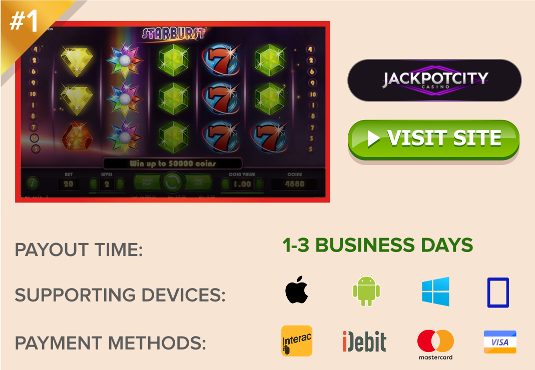The High-Tech Power behind Live Casinos
Behind the scenes look at live dealer blackjack technologies.
I’ve spent a good deal of time addressing the rise of live casino gaming, reviewing major live dealer operators, and delving into more intricate topics relating to this unique gambling vertical. Today, we’re going to take a closer look at how these operations do what they do. Not from an interactive web-based perspective, but rather from within the studios that broadcast them.

Most people think of a live casino as a cheaper, seat-free version of a land-based casino, or a more aesthetically appealing rendition of standard online casino games. Neither is the case. Live casinos are not cheap, nor do they come anywhere close to providing the same experience as an online casino. They are, in fact, extremely calculated endeavors that require a hefty investment to run, and therefore a high price for internet casino operators to acquire a license for and pass on to their customers.
When a successful product comes to fruition, it’s all worth it in the end, but the high-tech power behind live casinos is far more complicated than most ever take the time to consider.
Close-Up: Live Dealer Blackjack Technologies

Think of a live casino studio like a news broadcasting station. You need a few professionally trained and well-groomed people to deliver the news to the viewers at home. This is all the viewers really see. What they don’t see are the teleprompters that relay the news read by the news anchors; the high-tech cameras aimed at them, capturing their every movement; the microphones perfectly positioned to pick up a broadcaster’s voice with crystal clarity.
This is the exact same situation that goes on within a live casino studio, except that they aren’t relaying the news. They are conducting live dealer blackjack, baccarat, roulette, casino hold’em, sicbo, and whatever other games their studio provides to players at home.
The dealers and croupiers are professionally trained to perform their skillful duties without ever letting on to the audience at home that they’re reading an information screen while looking into a camera, instead of each player’s eyes. A card game dealer must position themselves and the cards they deal just so, allowing the sophisticated technology around them to do its job.
Let’s take a look at what some of that equipment is, and its purpose in the production of live dealer table games.
Video Cameras

Obviously, in order to broadcast the action at the tables, there must be at least one video camera aimed at it. The quality of a camera will determine what video resolution(s) the end user is able to view the game in. The cheapest variety are destined to appear only in low-resolution, such as 480p or 720p at best. The higher the quality of the camera, the higher the resolution (from 1080 up to 4k), therefore the clearer the image on the viewer’s screen.
Many studios will employ multiple cameras at some of their tables, especially roulette. One camera is generally trained on the roulette wheel from an aerial perspective. Another will be aimed at the croupier and wheel.
In more engaging titles, like Evolution’s Immersive Roulette, a series of hi-def cameras are installed from multiple angles. Each time the wheel is spun, players are entranced by a series of stationary and mobile camera angles, presented in a mixture of real-time and slow-motion action that genuinely captivates the audience.
Audio Equipment

The microphones employed by live dealer studios may look like the same tiny, easily-hidden clip-on mics used by the average at-home vlogger. In some cases, they may be. But major studios spend a lot more money on these tiny microphones to ensure they deliver clean sound while buffering out any white noise.
I’ve no doubt some live operators set up the old-style boom-mics overhead, but most have upgraded to the smaller line of audio equipment, if for no other reason than to avoid those big, fluffy mics accidentally appearing in a camera shot.
Optical Character Recognition (OCR)
One of the most important pieces of technology involved in live dealer gaming is a sophisticated camera lens that performs Optical Character Recognition, or OCR for short. OCR is capable of interpreting a wealth of information and relaying it to another piece of equipment known as the GCU (see below).

Think of an OCR as a highly complex speech-to-text program. It turn spoken words into written text, and is also capable of things like observing and converting real-time sign language into written and spoken text.
Such technology is highly valuable to the live gaming sector. A dealer can make a hand motion that the OCR interprets as a message, then displays that message on the screen of each player at home. A wave of the hand over the center of the table can translate to “no more bets”. The dealer will also say this out loud (assuming the casino utilizes dealer audio – not all of them do), but for players who cannot hear, or who have their volume turned down, the message is displayed textually, too.
OCR is also the technology that reads the cards. If you’ve ever noticed the cards in a live game being over-sized, anywhere from 1.5x to 4x standard size, it is intentional. The enlargement helps both players and the OCR to recognize them without err.
These cards also contain a bar-code, similar to the bar-codes scanned by a grocery store clerk when you go shopping. These bar-codes are read by the OCR to determine exactly what card has been turned. Which brings us to the…
Game Control Unit (GCU)
The Game Control Unit (GCU) is only about the size of a shoe box, yet it is perhaps the most important piece of equipment at the table. The GCU is the complex computer system that receives and translates information from all sides of the game. It interprets information from the OCR and provides it to the players. At the same time, it collects the information from players and sends it to the dealer’s prompt monitor (see below).

As an example, the GCU, in tandem with the OCR, is what displays a player’s cards when they cannot be turned face up, as is the case in PvP style live poker games. An OCR sensor in the table reads the bard-codes of all face-down cards that are slid over it, then relays that information to the GCU. In this way, players at home can see their cards without them being revealed to anyone else. Televised poker broadcasts like the WSOP use the same technology in their tables to show the audience at home each player’s hole cards.
Dealer Prompt Monitor
I’m honestly not sure what to call this particular piece of equipment. It is, in essence, the same as a teleprompter used by live television news stations. But this one is built specifically to relay information to the dealer, who must quickly absorb and use this info to keep the games moving without the players even realizing it’s happening.

For instance, at a live dealer blackjack table, the decisions of the currently acting player are displayed on this screen. The dealer will immediately react to the information the screen by splitting or hitting the hand if called for, or closing the hand and moving on to the next player. In addition to this, the dealer will see the usernames of all new players who take a seat at the virtual table, welcoming new comers to the game. If live text chat is available, the dealer can communicate with the players as well, responding to questions and comments as they come in.
No doubt, the more information the dealer is required to observe and respond to, the more difficult their job becomes. It really makes you appreciate the level of professionalism required to work at some of the industry’s top-rated live dealer casinos.
Card Tables & Roulette Wheels
If you’ve been paying attention so far, no doubt you realize that a live casino studio cannot possibly utilize the same basic tables and wheels found in most bricks-and-mortar casinos. Most of the tables are embedded with high-tech OCR lenses. The roulette wheels are built with special sensors that detect the winning number and relay that information to the GCU, which sends it to the dealer’s prompt monitor and the users at home.
Live Casino Technology Doesn’t Come Cheap…
As you can imagine, the cost of live dealer blackjack technology adds up quickly. The exact cost of a single table is hard to pin-point since the quality of video, audio and table equipment can vary so widely. But let’s remember that it’s not about setting up a single table, or even 3-5 tables and wheels. It’s about investing in an entire studio warehouse worth of tables and wheels. It’s about upgrading those tables each time better technology comes along in an effort to stay ahead of the competition. After all, if you’re not leading the pack, you’re trailing it, and there’s no prize for stragglers.
 Jackpotcity.com is our editorial pick for your gaming needs. Currently offering an entire suite of casino games, as well as a wide range of Canadian deposit options, JackPotCity truly offers world-class gaming.
Jackpotcity.com is our editorial pick for your gaming needs. Currently offering an entire suite of casino games, as well as a wide range of Canadian deposit options, JackPotCity truly offers world-class gaming.





